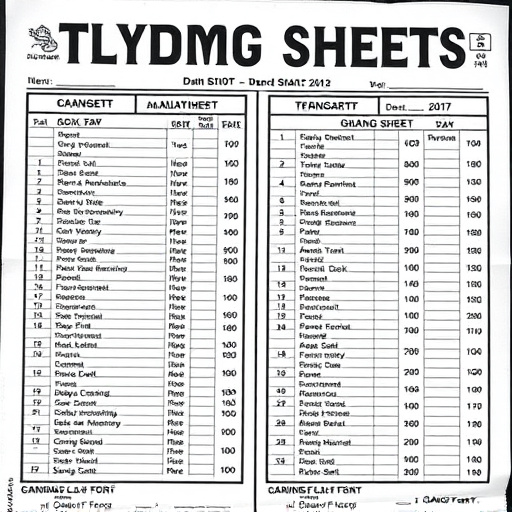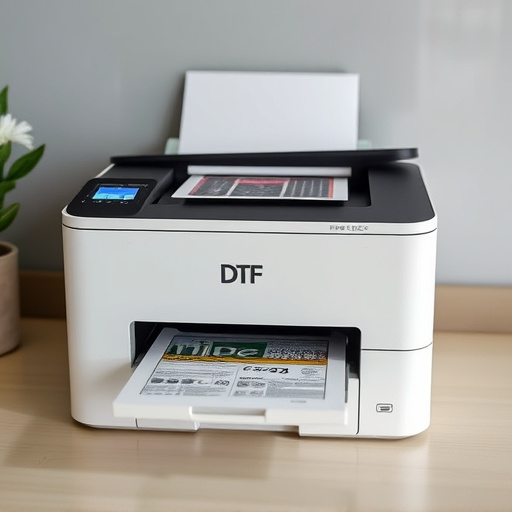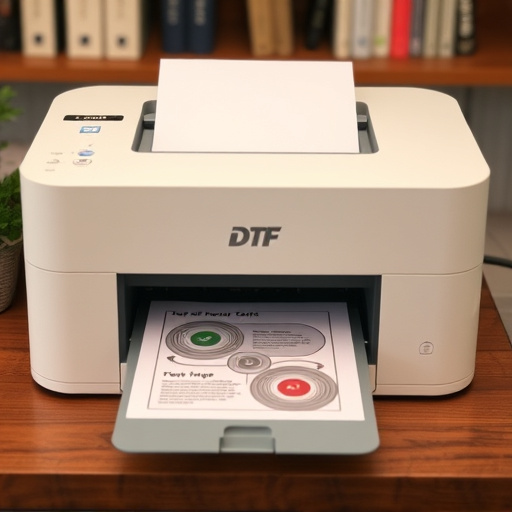High Quality DTF Transfers: Boosting Small Business Growth Strategies
High Quality DTF Transfers are transforming small business merchandising by offering versatile, prec…….
In the dynamic world of data transfer and digital technology, “High-Quality DTF Transfers” (Data Transfer Format) have emerged as a game-changer, revolutionizing the way information is exchanged across systems, regions, and industries. This article aims to provide an in-depth exploration of this concept, unraveling its intricacies, impact, and potential. By delving into various aspects, from technological foundations to global implications, readers will gain a comprehensive understanding of why high-quality DTF transfers are not just a technical advancement but a catalyst for transformation in the digital age.
Definition: High-Quality DTF transfers refer to the process of seamlessly and accurately transferring large volumes of data between different computing systems, platforms, or institutions while maintaining data integrity, security, and privacy. This involves employing specialized formats, protocols, and technologies to ensure that data remains unaltered during transit, catering to the growing demand for efficient, reliable, and secure data exchange.
Core Components:
Data Format: The structure in which data is organized and represented, ensuring compatibility and interpretability between systems. Common DTF formats include JSON, XML, and CSV.
Transfer Protocols: Rules and standards governing how data is transmitted over networks, such as HTTP, FTP, or dedicated secure channels for encrypted transfers.
Security Measures: Cryptography, authentication, and access controls to protect data from unauthorized access, tampering, or interception during transit.
Data Integrity Checks: Mechanisms to verify that the data received is identical to the data sent, ensuring no corruption or loss occurred during transfer.
Historical Context: The concept of DTF transfers has evolved significantly over the past few decades, driven by the increasing complexity and volume of data being generated and exchanged. Early data transfer methods were often clunky, slow, and prone to errors. The advent of the internet and subsequent development of standardized protocols like TCP/IP laid the foundation for faster and more reliable data communication. As data became a valuable asset, the need for high-quality transfers grew, leading to advancements in data compression, encryption, and format interoperability.
Significance: High-quality DTF transfers are pivotal for several reasons:
Interoperability: They enable different systems, often built on disparate technologies, to communicate and share data seamlessly, fostering collaboration and information exchange.
Data Integrity: By ensuring data accuracy and completeness during transfer, these transfers guard against errors, corruption, or loss, which can have significant consequences in various sectors, from healthcare to finance.
Security: The robust security measures associated with high-quality DTF transfers protect sensitive and confidential data, mitigating risks of cyberattacks, data breaches, and unauthorized access.
Efficient Data Management: They streamline data exchange processes, reducing manual efforts, minimizing delays, and optimizing resource utilization, thereby enhancing overall operational efficiency.
The influence of high-quality DTF transfers is a global phenomenon, with every region adopting and adapting these technologies to suit its unique needs and challenges.
Regional Adoption:
| Region | Key Players & Initiatives | Unique Challenges |
|---|---|---|
| North America | Leading tech hubs like Silicon Valley drive innovation in data transfer standards. Companies like AWS and Microsoft actively develop secure DTF solutions tailored for cloud-based services. | Strict privacy regulations, such as GDPR and CCPA, pose challenges for cross-border data transfers, requiring robust compliance mechanisms. |
| Europe | The European Union’s focus on data sovereignty and protection has led to the development of advanced encryption and anonymization techniques for DTF transfers. | Ensuring interoperability between diverse EU member state systems while maintaining strict data protection standards is a complex task. |
| Asia-Pacific | Countries like China and Japan invest heavily in high-speed internet infrastructure, enabling rapid data transfer across vast distances. | Regional differences in data governance and cultural attitudes towards data sharing present unique challenges for standardized DTF protocols. |
| Latin America & Africa | Rapid digital transformation in these regions is driving the adoption of cloud-based DTF solutions to bridge the digital divide. | Limited internet infrastructure and varying levels of digital literacy pose obstacles to implementing high-quality DTF transfers on a large scale. |
Global Trends:
Cloud Adoption: The shift towards cloud computing has significantly impacted DTF transfers, as data flows seamlessly between cloud service providers and end-user systems. This trend is expected to continue, with more organizations moving their data and applications to the cloud.
Data Privacy Regulations: Stringent data privacy laws worldwide have fueled innovation in secure DTF solutions, pushing developers to create robust encryption and anonymization techniques while maintaining data usability.
Cross-Border Data Flows: Globalization and digital transformation have led to increased cross-border data transfers, requiring standardized protocols and legal frameworks to address data sovereignty concerns.
IoT and Real-Time Data: The Internet of Things (IoT) revolution is generating massive amounts of real-time data that need efficient and secure transfer mechanisms, further emphasizing the importance of high-quality DTF technologies.
High-quality DTF transfers offer transformative advantages across various sectors:
Healthcare: Secure and efficient data exchange between hospitals, research facilities, and patients’ electronic health record systems can improve patient care, facilitate medical research, and enable faster emergency response times.
Finance: Real-time, secure data transfer between banks, stock exchanges, and regulatory bodies ensures the integrity of financial transactions, supports market analysis, and aids in fraud detection.
Government & Public Services: Efficient DTF systems can streamline citizen services, facilitate cross-departmental data sharing for policy formulation, and enhance disaster response coordination.
Retail and E-commerce: Seamless data exchange between retailers, suppliers, and logistics providers improves inventory management, enhances customer experiences through personalized marketing, and enables efficient supply chain operations.
Media & Entertainment: High-quality DTF transfers are crucial for distributing digital media content globally while ensuring copyright protection and revenue sharing mechanisms.
While the benefits of high-quality DTF transfers are substantial, several challenges must be addressed to fully realize their potential:
Standardization: Lack of uniform standards across industries and regions can lead to interoperability issues. Developing and adopting widely accepted protocols and formats is essential for seamless data exchange.
Security Concerns: As data becomes increasingly valuable and sensitive, so do the associated risks. Constant innovation in security measures, including advanced encryption techniques and threat detection systems, is crucial.
Data Governance: Different jurisdictions have varying data protection regulations, creating complexities for global data transfers. Establishing clear guidelines and legal frameworks for cross-border data flow is essential.
Digital Literacy and Infrastructure: Addressing the digital divide by improving internet infrastructure and promoting digital literacy ensures that all regions can benefit from high-quality DTF technologies.
The field of DTF transfers is constantly evolving, with researchers and developers pushing boundaries to create more efficient, secure, and user-friendly solutions. Some emerging trends include:
Quantum-Resistant Cryptography: With the increasing power of quantum computers, traditional encryption methods are at risk. Quantum-resistant algorithms offer a new level of security for DTF transfers, ensuring data protection in the future.
Blockchain Integration: Blockchain technology’s inherent security and transparency can enhance DTF systems, providing an immutable audit trail of data exchanges while maintaining privacy.
Artificial Intelligence (AI) for Data Validation: AI-driven systems can analyze data during transfer to detect anomalies, ensure data integrity, and automate error correction processes.
Low-Power Wide-Area Networks (LPWAN): For IoT applications, LPWAN technologies enable efficient DTF transfers over long distances with minimal power consumption, addressing challenges in remote areas.
High-quality DTF transfers are not just a technical advancement; they are a catalyst for digital transformation, enabling organizations and societies to unlock new possibilities and overcome challenges. As we navigate an increasingly interconnected world, these transfers will play a pivotal role in shaping our future, ensuring data is accessible, secure, and useful across borders, industries, and systems. By addressing the challenges and embracing emerging innovations, we can harness the full potential of high-quality DTF transfers, paving the way for a more efficient, secure, and collaborative digital world.

High Quality DTF Transfers are transforming small business merchandising by offering versatile, prec…….

Direct to Fabric (DTF) technology has evolved dramatically, offering high-quality DTF transfers that…….

High Quality Direct to Fabric (DTF) transfers are transforming customization in apparel and product…….

High Quality DTF Transfers are transforming small business operations by enabling fast customization…….

High Quality Direct-to-Fabric (DTF) transfers have transformed textile printing, offering unparallel…….

High Quality DTF Transfers are transforming printing with advanced technology, offering exceptional…….

Choosing a supplier for High Quality DTF Transfers involves assessing their technology, print qualit…….

High-quality Direct to Film (DTF) transfers are a game-changer for artists, enabling them to transfo…….

DTF (Direct-to-Fabric) technology revolutionizes textile printing, offering exceptional quality on c…….

High Quality DTF (Direct to Fabric) transfers are a revolutionary printing technology offering unpar…….